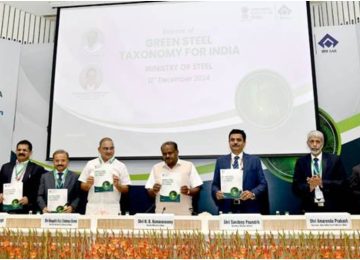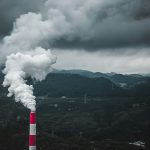The carbon emissions story in 2025 exposes the uncomfortable reality at the heart of global climate negotiations. The world is fragmented, where the greatest polluters are failing to lead by example, and the most vulnerable risk being left behind.
While India’s emissions have slowed, even declined marginally, the country remains trapped by coal dependence, insufficient infrastructure, and climate finance gaps. Recent data shows that India’s greenhouse gas (GHG) emissions growth slowed dramatically, with a rise of just 0.3% in Q1 2025—a marked plateau when compared to the previous year’s 1.9% increase, totaling 3.35 billion tonnes of CO₂-equivalent.
Meanwhile, the United States, with its historically high per capita emissions, has driven up its total emissions in the first half of 2025, reverting to coal amid policy stumbles. In a reversal of global patterns, US emissions rose by 4.2% in the first half of 2025, reaching roughly 640 million metric tons from fossil fuels in the power sector—a 5% jump over the previous year.
In sharp contrast, China—after years of breakneck fossil-fueled growth—has finally registered a meaningful fall in emissions, thanks to unprecedented clean energy expansion. In sharp contrast to the U.S., China’s carbon dioxide emissions fell by 1-2.7% in the first half of 2025 compared to the same period in 2024.
Yet, these shifts are neither coordinated nor sufficient to avert the looming climate catastrophe.
India: slowing emissions, mounting challenges
India’s greenhouse gas emissions saw a slight increase of just 0.3% in early 2025, with some months even registering a decline. The country’s total emissions hover around 3–4 billion tonnes CO₂-equivalent, yet per capita emissions remain under 3 tonnes—far below both the US and China. This recent slowdown is credited to rapid renewable deployment and efficiency efforts, along with the retirement of several coal units. While these represent important progress,
India still faces:
- The national grid’s reliance on coal is hard to shake, restricting rapid decarbonization.
- Limited access to climate finance undermines resilience and green growth.
- The “phase down” rather than “phase out” of coal leaves wiggle room for future expansions.
Unless infrastructure bottlenecks are resolved and a stronger just transition is pursued, India’s emissions could accelerate again as demand surges.
US, a regressive turn
The U.S., often hailed as a climate leader, saw its emissions rise by 4–5% in the first half of 2025, reaching approximately
5 billion tonnes CO₂-equivalent. With per capita emissions above 13–14 tonnes, the highest among major economies, the US remains an outsized contributor—its recent uptick aggravated by revived coal-fired electricity and volatile energy markets.
Despite its wealth and capacity to decarbonize quickly, regulatory rollbacks have undermined climate progress. If the U.S. does not commit to deep, equitable emissions cuts—moving well beyond current pledges—it will continue to set a poor example for the world.
China: deceleration and hope
China’s emissions, long the engine of global growth, finally fell by 1.6% in the first half of 2025. Total annual emissions, while still towering above others at over 13 billion tonnes CO₂-equivalent, have plateaued—and per capita emissions now nearly match America’s, at 8–12 tonnes. Record solar and renewable expansion, plus softening industrial demand in construction materials, helped drive this historic dip. However, experts warn this could be a temporary reprieve; China needs sustained annual declines if the world is to have a fighting chance against runaway climate change.
At a glance:
| Country | 2025 Total Emissions (bn tons) |
Per Capita Emissions (tons) |
2025 Mid-Year Trend |
| India | ~3.35–4 | less than 3[3] | up 0.3% or flat/decline |
| US | ~5 | | 13–14 | up 4–5% |
| China | ~13 | 8–12 | down 1–2% |
The global climate fight cannot be won in isolation. True progress depends on global equity and ambition. The U.S. and China must accelerate their emissions cuts, setting binding, science-based targets that go beyond business-as-usual (BAU) deals.
Meanwhile, India needs to double down on renewables, grid modernization, and green industrial solutions. Pushing for adaptation finance, strong institutions, and principled international agreements. Anything less risks not just India’s development but planetary stability itself.











